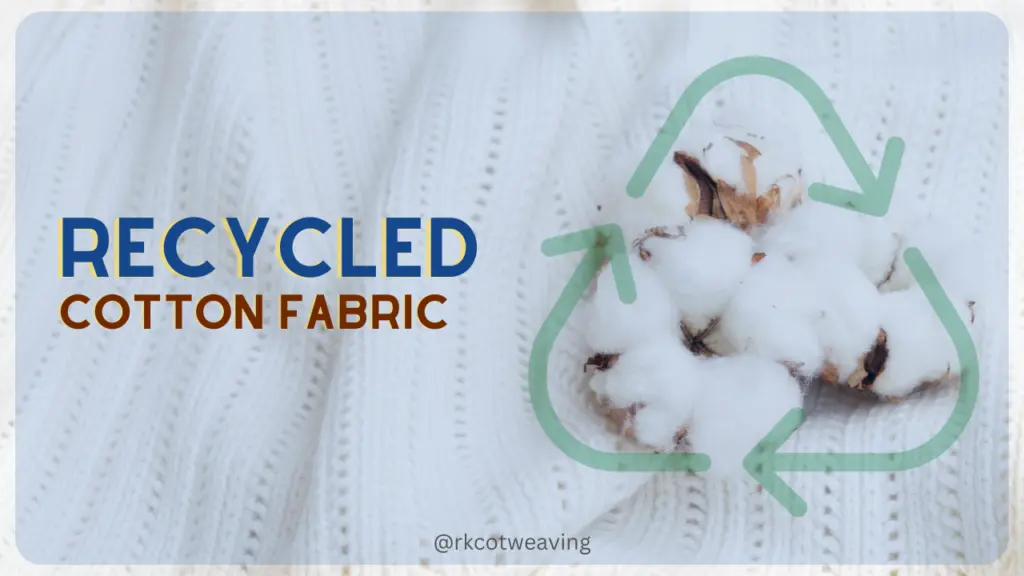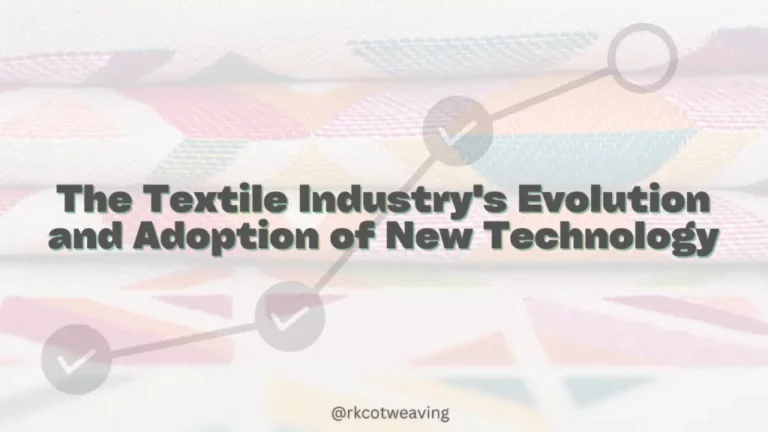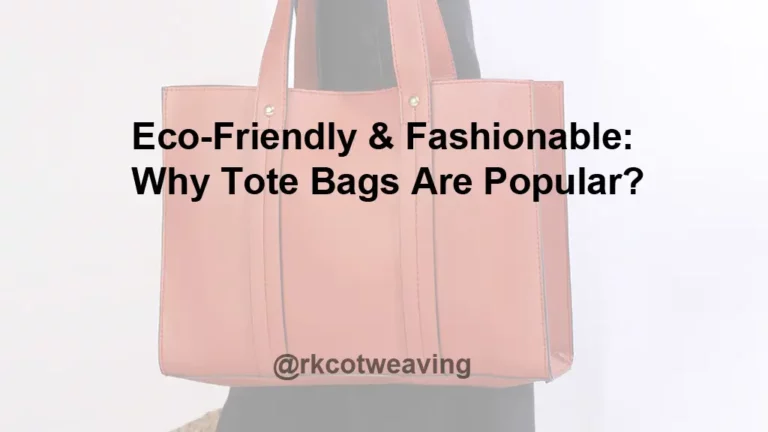Recycled Cotton Fabric

Recycled Cotton Fabric
Recycling is about more than just plastic. A wide range of everyday items are now being remade from various defunct items that are discarded. As global consumption rises, exacerbated by the rise of fast fashion, more and more environments suffer irreversible damage. Something clearly needs to change.
As consumers, we have several options for reducing the amount of cotton we use in our daily lives. Simply buying fewer, higher-quality clothes and cotton products, buying secondhand, or repurposing are all options. Another option is to purchase items made of organic cotton, which is grown without the use of harmful chemicals or pesticides. A third option is to purchase items made from recycled cotton.
On the verge of becoming a major market for recycling using repurposed fabrics. The global market for recycled textiles was valued at more than $5 billion in 2022, and it is expected to grow by thousands of millions to nearly $8 billion by 2030.
Recycled cotton is defined broadly as the conversion of cotton fabric into cotton fiber that can be reused in textile products. This allows the item to be repurposed as something else, keeping it out of landfills and incinerators.
Pre-consumer Recycled Cotton: Cotton is recycled as pre-consumer waste, including fabric left on the cutting room floor and defective fabric and yarns produced during manufacture. Pre-consumer trash makes up the majority of the recycled cotton yarn currently on the market. It has been gathered and reduced to fiber form through shredding. Due to the substantial pressure this places on the fiber, fully recycled cotton is unsuitable for use in clothing for fashion, where strength and durability are essential qualities. To manufacture the yarn and get the desired tactile strength, recycled fibers are combined with virgin fibers.
· Faulty fabric during weaving – Broken yarn – Excess fabric from the cutting room floor
· The fabric is collected and shredded back to small fibers
· Fibers are taken and blended with long virgin fibers to create stronger yarn
· Yarn is woven or knitted into a textile
Post-consumer Recycled Cotton: Cotton from garments and home interior fabrics is post-consumer recycled cotton. Post-consumer waste frequently contains trims and components that make recycling more difficult. Lower-quality recycled fibers and post-consumer fibers can find new uses in mattress stuffing, insulation, and industrial textile applications for construction.
· Clothes in our wardrobe – Linen and towels – Home and soft furnishings
· All trims like zips and buttons need to be removed along with anything that is not the base textile
· The textile is shredded to a specific size depending on the end use
· The shredded fabric may end up as a cushion infill or mattress stuffing
Process to Turn Fabric Back into Fiber
· Post-industrial or post-consumer cotton waste is used in the production of recycled or upcycled cotton fabrics. Cellulosic fibers are derived from yarn, fabric, textile production, or fabric waste, as well as scraps, old garments, and home textiles.
· Cellulose is one of the most environmentally friendly materials made from renewable resources. Wood and plants are primarily made up of lignin and cellulose.
· Cotton waste collection is the first step in cotton recycling. After sorting waste by colour and type, it is mechanically chipped and pulled apart to produce regenerated cotton fibers.
· Sorted fibers are cleaned and spun into new yarns. The fibers that result are shorter and more difficult to process than the original material.
Although some fabric manufacturers use recycled cotton alone, it is frequently blended with other types of fibers, such as regular cotton, polyester, nylon, acrylic, or spandex, to increase its strength and longevity. The majority of recycled cotton is recovered mechanically. First, fabrics and materials are color-sorted. Following sorting, the fabrics are fed through a machine that shreds them into yarn and then raw fiber. This is a harsh process that puts a lot of strain on the fiber. Fibers frequently break and become entangled during shredding. The raw fiber is then spun into yarn to be used in other products. The quality of recycled fiber will never be equal to that of the original fiber. Fiber length and length uniformity, in particular, will be impacted, limiting the end-use application.
Benefits & Challenges to Recycled Cotton Fiber
Benefits
· Numerous low-grade items, including insulation, mop heads, rags, and stuffing, can be made from recycled cotton.
· Many products can be diverted from landfills through the recycling process. The Council for Textile Recycling estimates that annual textile waste totals 25 billion pounds.
· When using a pre-processed product, the amount of energy, water, and dye used is reduced. Savings are realized by offsetting the creation of new materials. Because recycled cotton yarns are typically sourced from pre-consumer textile scraps that have been color-sorted, the yarns are already dyed.
· The savings in CO2 and fossil fuel emissions can be offset in part by using existing materials. The collection, processing, and shipping of cotton scraps or clothing, on the other hand, can reduce or cancel out some of these savings.
Challenges
· Cotton must be blended with other fibers to be made into new yarn for strength and durability, and thus cannot be recycled indefinitely.
· The recycled cotton content will vary depending on the end-use application. Any amount of recycled material will have an effect on yarn and fabric properties like evenness, strength, and uniformity.
· For recycled cotton, the risk of contamination by other fibers is much higher. When establishing the recycled supply chain, stitching, sewing thread, and small amounts of spandex should all be considered.
RADHEY KRISHNA COTWEAVING is a leading GRS Global Recycling Standard Certified manufacturer, supplier, and exporter. Which guarantees:
· Less harmful impact of production on people and the environment
· Longevity of treated products
· Products with a high percentage of recycled content
· Responsible manufacturing
· Using recycled materials
· Traceability
· Honest communication
· Participation of stakeholders
We supply recycled fabric to all of the world’s major garment manufacturers and exporters. Because of our well-equipped infrastructure, we are able to meet the bulk requirements of our valuable customers in a timely manner. Furthermore, our ethical business practises, open dealings, customer-focused approach, and competitive pricing have aided in the development of a large global customer base.







